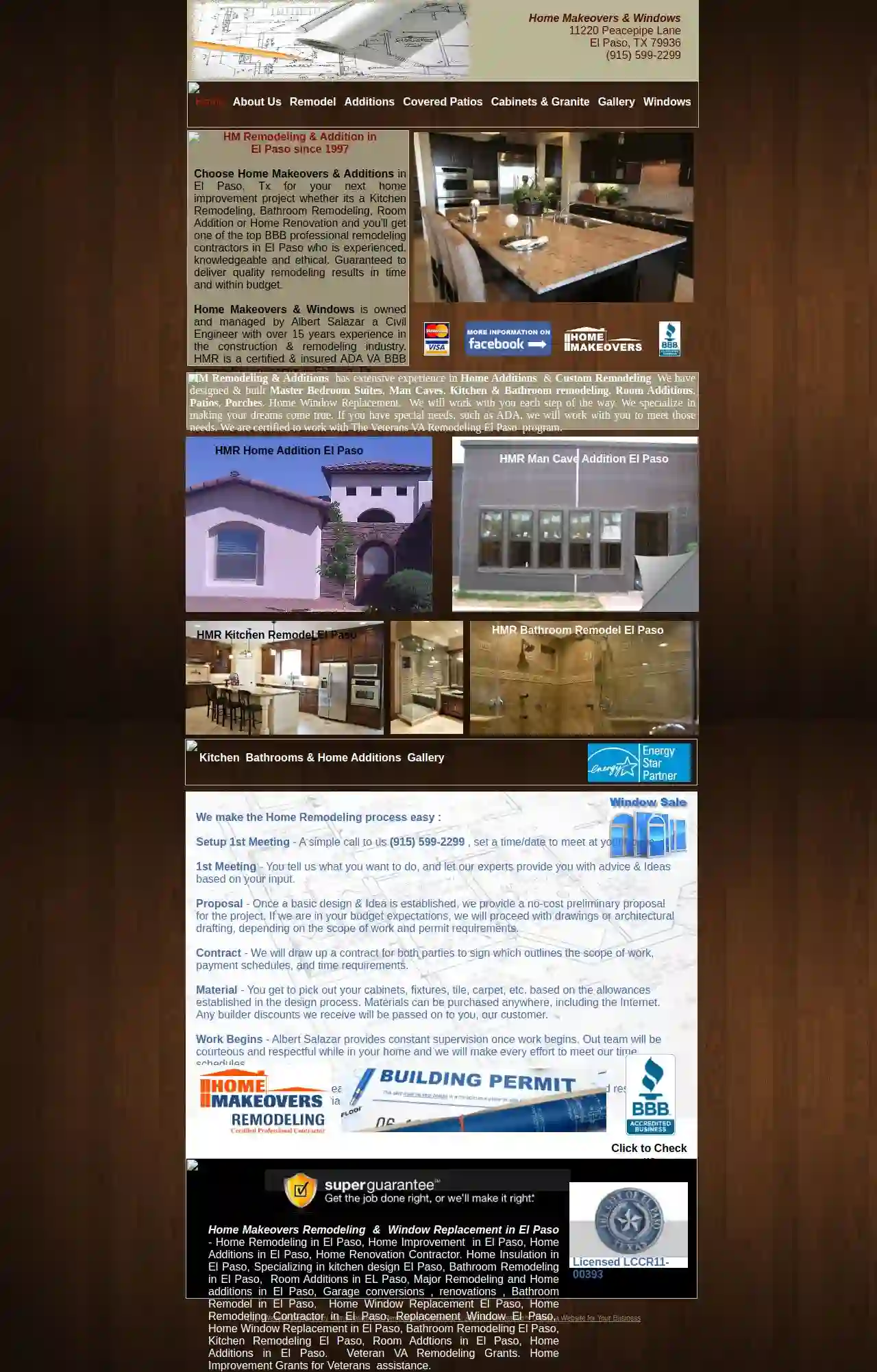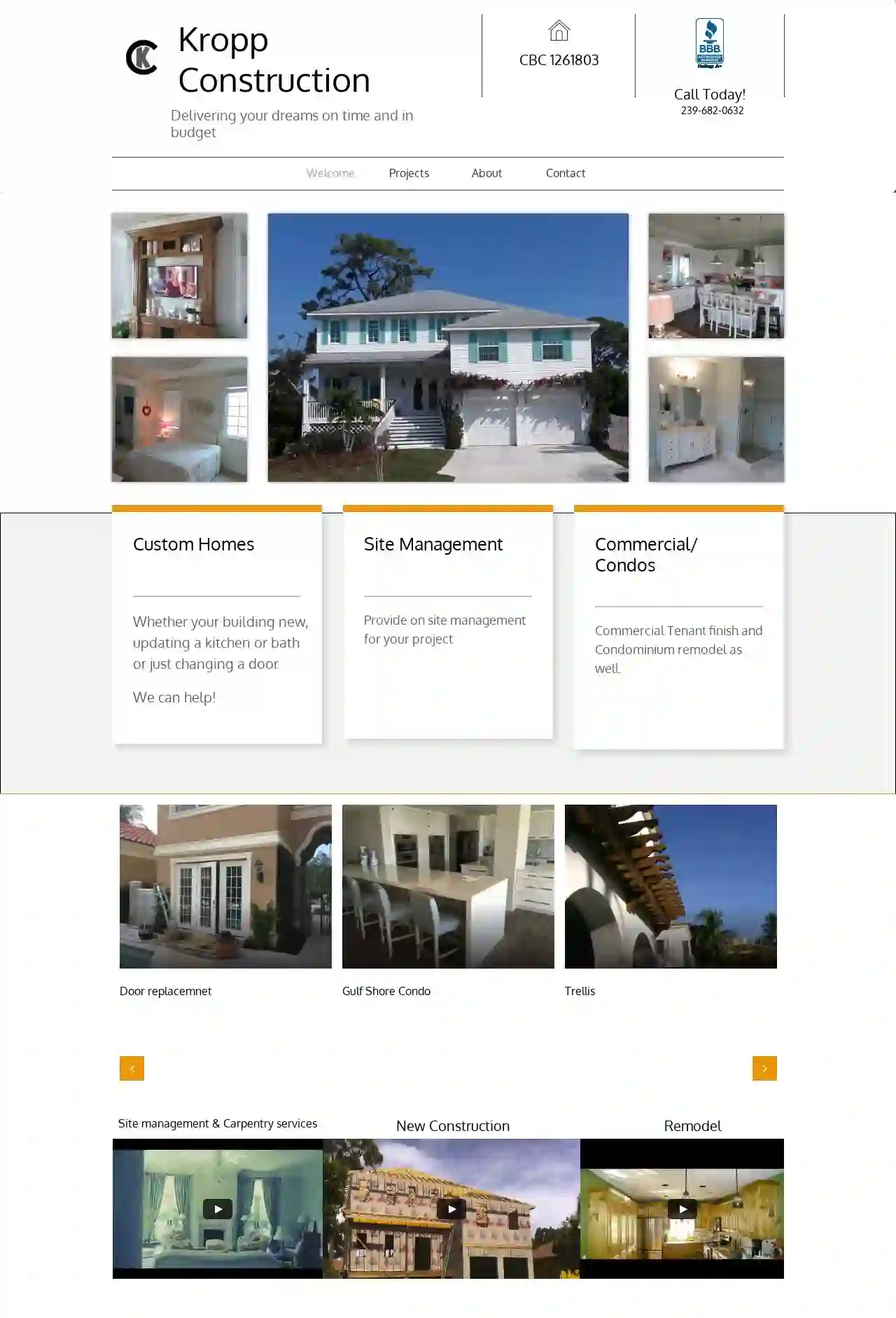Bathroom Remodeling San Antonio
Top Bathroom Remodeling in San Antonio
Get multiple Bathroom Remodeling quotes for your project today! Compare profiles, reviews, accreditations, portfolio, etc... and choose the best offer.

Dr. Repair and Remodeling
51 reviews123 Main St, Suite 101, Plano, 75075, USDr. Repair and Remodeling is a Plano based handyman and home repair company. We provide our service in the following towns, and their surrounding areas. If you don’t see your town listed, give us a call or send us an estimate request and we will see if we can help!
- Services
- Why Us?
- Our Team
- Gallery
Get Quote
Irving Bathroom Remodelers
13302 S Briery Rd, Irving, TX, 75060, USIrving Bathroom Remodelers is a leading provider of residential and commercial bathroom remodeling services in Irving, Texas. With years of experience, they offer a wide range of services including bathroom construction, renovation, and conversion. Their team of experts can help you design and upgrade your bathroom to meet your needs and preferences.
- Services
- Why Us?
- Accreditations
- Our Team
- Testimonials
- Gallery
Get Quote
Aura Home Remodeling
4.364 reviews123 Main St, Suite 100, Houston, 77001, USAura Home Remodeling & Construction is a professional home remodeling and construction company in Houston, Texas. We provide remodeling services for bathrooms, bedrooms, kitchens, offices, and commercial spaces, as well as patios, roofing, flooring, foundations, and more. Our team is fully registered, licensed, bonded, and insured, ensuring that we can take care of all home remodeling, construction, makeover, and home repair projects. We offer free estimates to start every project and provide the finest and professional home remodeling services in Houston, Cypress, Humble, Katy, Deer Park, and more.
- Services
- Why Us?
- Accreditations
- Our Team
- Testimonials
- Gallery
Get Quote
SC remodeling
11 reviews1234 Main St, Suite 101, El Paso, 79925, USSC Remodeling LLC is a trusted general contractor in El Paso, specializing in general remodeling, kitchen and bathroom renovations, handyman services, interior and exterior painting, drywall, laminate flooring, carpentry, and more. With over 19 years of excellence, we are dedicated to providing responsible, honest, reliable, and trustworthy service. Our skilled team delivers top-quality craftsmanship and exceptional customer service, focusing on precision and attention to detail. We offer a 10% discount for military personnel and seniors on our home remodeling services.
- Services
- Why Us?
- Accreditations
- Our Team
- Testimonials
- Gallery
Get Quote
Home Makeovers Remodeling
32 reviewsEl Paso, TX, 11220 Peacepipe Lane, 79936, USHomemakeovers Remodeling Specialists is a leading home improvement company in El Paso, Texas, offering a wide range of services including kitchen remodeling, bathroom remodeling, room additions, and home renovation. With over 15 years of experience in the construction and remodeling industry, the company is owned and managed by Albert Salazar, a Civil Engineer. Homemakeovers & Windows is a certified and insured ADA VA BBB remodeling contractor in El Paso, TX.
- Services
- Why Us?
- Accreditations
- Our Team
- Gallery
Get Quote
R&R Remodeling and Construction, LLC
4.813 reviews200 S. Robinson Dr, Robinson, 76706, USR&R Remodeling and Construction is a leading remodeling company serving Central Texas. We specialize in complete renovations, outdoor patios, partial remodels, and garage enclosures. Our team of experienced professionals utilizes state-of-the-art equipment and innovative techniques to deliver exceptional workmanship on every project. Whether you need drywall hung or a full bathroom remodel, we have the resources and expertise to exceed your expectations. We are committed to providing our clients with unparalleled service and quality craftsmanship. Our goal is to make your remodeling experience as stress-free and enjoyable as possible. Contact us today for a free consultation and let us help you transform your home or business.
- Services
- Why Us?
- Gallery
Get Quote
Diamond G Remodeling
1Corpus Christi, USDiamond G Remodeling is a family-owned and operated business based on the beautiful South Texas coast. We service all surrounding areas of Corpus Christi and The Rio Grande Valley. Our family of clients values our level of attention and commitment to quality. Whether you're looking to create a dream kitchen, a luxurious bathroom, or upgrade your bedroom, our team of experts is here to help you make your vision a reality. We offer a wide range of services, including kitchen and bathroom remodels, bedroom upgrades, patio and deck construction, roofing, painting, fencing, custom closets, custom cabinetry, countertops, siding replacement, window replacement, flood and water damage restoration, and insurance claims assistance. We also specialize in complete home renovations. Contact us today for a free consultation and let us help you transform your home.
- Services
- Why Us?
- Gallery
Get Quote
Kropp Construction
1N88 W17000 Appleton Ave, Menomonee Falls, 53217, USKropp Construction is a family-owned and operated business serving the greater Milwaukee area since 1988. We specialize in residential and commercial construction, offering a wide range of services from new construction to renovations and additions. Our team of experienced professionals is dedicated to providing high-quality craftsmanship, exceptional customer service, and competitive pricing. We pride ourselves on building lasting relationships with our clients and exceeding their expectations on every project. At Kropp Construction, we understand that your home or business is a valuable investment. That's why we take a meticulous approach to every project, ensuring that it is completed on time, within budget, and to the highest standards. We use only the finest materials and the latest construction techniques to deliver lasting results. Whether you're dreaming of a new home, expanding your business, or simply updating your existing space, Kropp Construction is here to help. Contact us today for a free consultation and let us bring your vision to life.
- Services
- Why Us?
Get Quote
Arquivision Home Remodeling
56 reviewsNaples, FL, USA, 123 Main St, 34109, USArquivision LLC is a family owned and operated business located in Naples, FL. As a Licensed General Contractor with over 10 years of experience in the industry, we specialize in Kitchen, Bathrooms, Tile, Wood, Laminate, Paint, Carpentry, Plumbing and Electrical work. We are committed to provide high-quality contracting services to our clients. We strive to deliver exceptional results on every project and exceed our clients' expectations.
- Services
- Why Us?
- Accreditations
- Our Team
- Testimonials
- Gallery
Get Quote
Remodeling BCS
53 reviews1234 Elm Street, College Station, TX, 77840, USBCS Remodeling is a professional home remodeling service provider in College Station, Texas. They specialize in bath remodels, kitchen remodeling, home remodels, outdoor kitchens, concrete staining, and home add-ons. Their team of experienced contractors is dedicated to providing outstanding customer service and ensuring that clients' remodeling needs are met.
- Services
- Why Us?
- Accreditations
- Our Team
- Testimonials
- Gallery
Get Quote
Over 3,877+ Remodeling Businesses on our directory
Our remodeling contractors operate in San Antonio & beyond!
Remodelyng.com has curated and vetted the Best Remodeling Companies arround San Antonio. Find a top & trustworthy pro today.
Bathroom Renovation FAQ
- Fixtures like toilets, sinks, showers, and tubs
- Cabinets and vanities, particularly if custom-made
- Countertops, especially if you choose premium materials like granite or quartz
- Tile work for floors, walls, and showers
- Potential need for structural or layout changes
- Layout optimization: Explore space-saving layouts, such as corner sinks, pedestal sinks, or wall-mounted toilets.
- Lighting: Incorporate strategically placed lighting, such as recessed lights or wall sconces, to make the space appear larger and brighter.
- Color and materials: Use light colors and reflective surfaces to create a sense of openness and maximize natural light.
- Storage solutions: Maximize storage with built-in shelving, niches, or cabinets with sliding doors or drawers.
- Fixtures and fittings: Choose compact or wall-mounted fixtures, such as toilets, sinks, and showers, to save floor space.
- Mirrors: Strategically place mirrors to create the illusion of depth and reflect light, making the space feel larger.
- Budget: Establish a realistic budget based on the scope of the renovation and the quality of materials you desire.
- Layout and design: Determine if you want to reconfigure the layout or maintain the existing footprint, and plan for optimal functionality and flow.
- Ventilation and lighting: Ensure proper ventilation to prevent moisture buildup and incorporate adequate lighting for tasks and ambiance.
- Plumbing and electrical: Address any necessary updates or modifications to the plumbing and electrical systems, considering future maintenance and accessibility.
- Storage and organization: Plan for ample storage solutions, such as cabinets, shelving, and organizational systems, to keep the space clutter-free.
- Accessibility and safety: Consider incorporating features like grab bars, non-slip surfaces, and curbless showers for safer and more accessible use.
- Durability and maintenance: Choose high-quality, low-maintenance materials that can withstand moisture and heavy use.
What is the most expensive part of a bathroom remodel?
What should I consider when remodeling a small bathroom?
What are the most important things to consider when remodeling a bathroom?
What is the most expensive part of a bathroom remodel?
- Fixtures like toilets, sinks, showers, and tubs
- Cabinets and vanities, particularly if custom-made
- Countertops, especially if you choose premium materials like granite or quartz
- Tile work for floors, walls, and showers
- Potential need for structural or layout changes
What should I consider when remodeling a small bathroom?
- Layout optimization: Explore space-saving layouts, such as corner sinks, pedestal sinks, or wall-mounted toilets.
- Lighting: Incorporate strategically placed lighting, such as recessed lights or wall sconces, to make the space appear larger and brighter.
- Color and materials: Use light colors and reflective surfaces to create a sense of openness and maximize natural light.
- Storage solutions: Maximize storage with built-in shelving, niches, or cabinets with sliding doors or drawers.
- Fixtures and fittings: Choose compact or wall-mounted fixtures, such as toilets, sinks, and showers, to save floor space.
- Mirrors: Strategically place mirrors to create the illusion of depth and reflect light, making the space feel larger.
What are the most important things to consider when remodeling a bathroom?
- Budget: Establish a realistic budget based on the scope of the renovation and the quality of materials you desire.
- Layout and design: Determine if you want to reconfigure the layout or maintain the existing footprint, and plan for optimal functionality and flow.
- Ventilation and lighting: Ensure proper ventilation to prevent moisture buildup and incorporate adequate lighting for tasks and ambiance.
- Plumbing and electrical: Address any necessary updates or modifications to the plumbing and electrical systems, considering future maintenance and accessibility.
- Storage and organization: Plan for ample storage solutions, such as cabinets, shelving, and organizational systems, to keep the space clutter-free.
- Accessibility and safety: Consider incorporating features like grab bars, non-slip surfaces, and curbless showers for safer and more accessible use.
- Durability and maintenance: Choose high-quality, low-maintenance materials that can withstand moisture and heavy use.